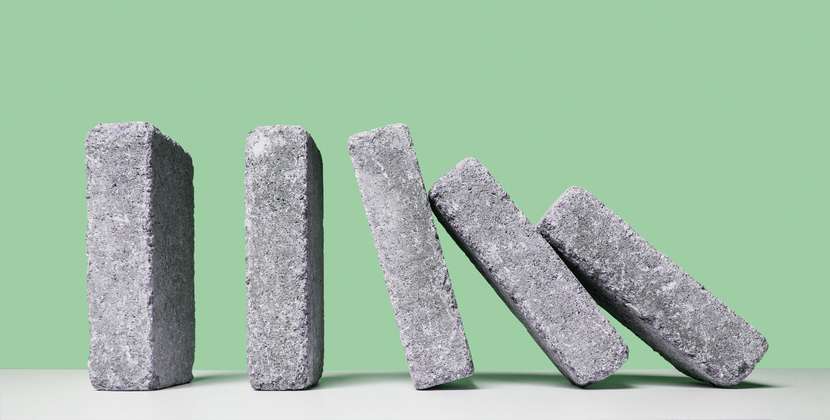Climate marches have made climate change top of mind, but rarely discussed is the impact of the building and construction industry, one of the world’s largest emitters of greenhouse gases according to the Intergovernmental Panel on Climate Change (IPCC). Globally, the sector is responsible for some some 30 to 40 percent of emissions ,while in New Zealand that figure is around twenty percent.
New Zealand Green Building Council launched their zero carbon road map last week, which sets the goal that building owners and developers reach zero carbon on new builds by 2030.
They plan to start certifying existing buildings to zero carbon by 2020 and push tenants to demand landlords provide carbon-free buildings by 2025.
Green Building Council chief executive Andrew Eagles wants the government to require energy-efficiency labelling on existing buildings when they are sold or leased by 2024, essential if we are to reach zero carbon building goals.
Start your property search
“There’s no two ways about it. It simply has to happen,” Eagles says.
“Climate change is our greatest challenge. But New Zealand will not achieve the healthier zero carbon future we deserve, unless, together, we mightily curtail emissions from the building and construction sector.”

Should we using concrete for house-building? Photo / Getty Images
The response to the road map launch has been “phenomenal” with experts saying the industry needs a green shift, Eagles says.
“We have all the technology and know how to do this. Now it’s time for the government and industry to take action together.”
Of the 20 per cent of New Zealand’s emissions produced by building and construction, 28 per cent are embodied, that is produced during the manufacturing process of construction materials. The remainder are from the energy used to operate the building during its 60 year lifetime, including use of gas heating (a fossil fuel, not renewable) and energy for running the building.
The Council lays out a number of ways to achieve low carbon new buildings, including selecting materials and systems that use local materials and ones with lower embodied carbon.
One of their key recommendations is to swap concrete for alternative, natural or plant-based materials such as engineered timber. It provides a much lighter and less costly construction and can be sourced locally.
Waste tyre rubber, plastic or volcanic ash concrete are green and cement-free alternative to traditional concrete internationally, says Fletcher Building’s manager of sustainability, Helen Jenkins. However, these are not commonly used in New Zealand.
Building engineering company Oculus director James Powers says new manufacturing technologies would have to be created to make a timely switch to carbon-free new builds.
Powers says that only big political will and openness to innovation would help Kiwis achieve the carbon free goal for all buildings in 11 years.
“The building industry tends to be quite conservative, resistant to innovation and slow to change and it’s required to reach that target.”
People are also hung up on the costs of building, he says.
“It’s very expensive to construct in New Zealand and partially because our technology is completely different from everywhere in the world, it’s not like you can easily use overseas products that are cost-effective there.”
To minimise occupational carbon use New Zealand should build according to Passive House technology, Powers says.
It’s an international energy efficiency standard for builds that require little or no energy for heating or cooling which reduces the footprint on the environment.
He says the electricity bill in a passive house apartment would average $250 for the whole year, less than the monthly bills for a typical New Zealand house.
But the current building environment does not make that happen.
Auckland Council’s premium building consent manager Sally Grey, speaking at the New Zealand Green Building Week, said there was no mechanism to enforce sustainability unless it’s certified in the building code.
“We can receive an application with nothing sustainable in it at all and we will still approve it because it meets the regulations,” she said.
“The code is focused on durability and safety but not sustainability. Another barrier to drive it is that consumers are price sensitive.”
Consumers are backing sustainability projects but don’t have the appetite to pay for them, she says.
The Green Building Council is more optimistic, pointing to the examples of listed property company Argosy, which is on the way to rating all its office buildings’ energy use by 2020 and has delivered four 5 Green Star office blocks. It offers the case study of Samson Corporation which have made a science-backed target of net zero emissions by 2030 and already achieved carboNZero certification.
Architecture firm Warren and Mahoney, carboNZero since 2007, is already using design tools that can measure embodied emissions so that they can make design decisions that are high-performance and low-carbon.
And Auckland Airport, the country’s fourth largest developer, already has a science-based emissions reduction target, and is now calculating embodied carbon calculations in its business cases for new buildings and looking at ways to sustainably use concrete and steel.












































































